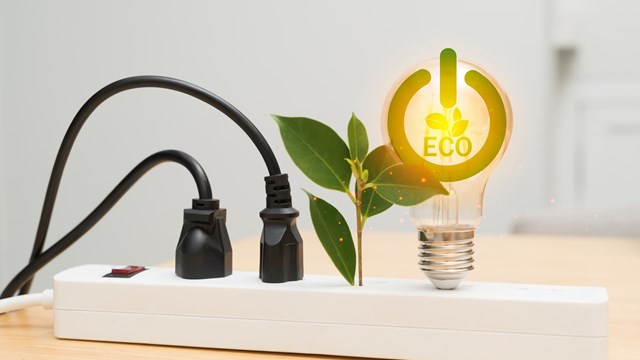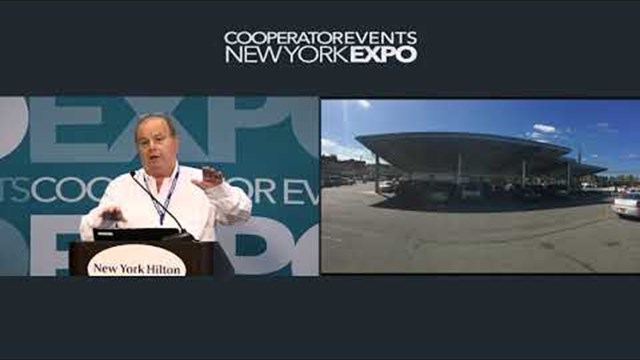From major energy providers to niche sustainability innovators, it seems as if everyone these days is clamoring to get a piece of that celebrated green market. New York condo and co-op boards have taken note, and many have begun to explore and implement technologies that can help reduce their carbon footprint. But, as always, frugality is the watchword. So which of the myriad green energy options may be the solution for your association's power-based predicament?
Con Ed Green Power
Starting with a big name, Con Edison currently offers a green-power alternative called Con Edison Solutions, which is generated from 35 percent wind power and 65 percent New York run-of-river hydropower, and costs 1 cent per kilowatt hour (kWh) more than the company's standard power. That sure sounds like something, right? One dang cent! Who doesn't want to get rid of some cumbersome pennies? Well, unfortunately, it's the second part of that equation that determines actual cost. As Doug Weinstein, vice president of Manhattan-based AKAM Living Services' Project Management Group says, "You can have a building that uses a million kWh. You do the math and that adds up."
The average residential electricity usage in New York State is 603 kWh, with an average cost of 17.62 cents per kWh, according to the website Electricity Local. Add one cent to the rate, and your bill goes from $106 to $112. If your building uses 1 million kWh, you probably live in a building with over 1,600 units. So, if a 1,600-unit building switched to Con Ed’s green power, the bill for the entire building would go up by $9,950.
So, is it worth making the switch? "There's no real downside to embracing a greener alternative power source, because there won't be any noticeable effect on the building," says Weinstein. "No one will be able to ascertain via the commodity exactly from where their electricity is stemming. There's no lower wattage or anything. And, as a matter of fact, there may be tax incentives—but the board would have to check with its accountant."
While buying wind- or water-generated electricity at a premium price is certainly an option for associations, it only goes so far to reduce carbon footprint compared to more comprehensive technologies that are available. At the forefront of these is cogeneration, or cogen, which involves overhauling a building's systems thus allowing it to generate its own electricity and heat.
Cogeneration
"To me, the green energy purchasing [i.e. the aforementioned Con Ed program] is little more than paying a premium for electricity, and you're not having an impact in a meaningful way," says David Lesser, president of IntelliGen Power Systems in Old Bethpage. "Depending on a building's heating and cooling, cogen can be a viable alternative energy source. It tends to have a big impact while saving money, but it's not for every building. It's dependent on what a property's loads are on both the electric and heating/cooling sides."
The main qualifier for adapting cogeneration to a property is size. For smaller buildings, the fixed cost with implementing this type of project will eat into an association's coffers. "But once you get over a certain size, we can usually find a cogen-oriented solution," says Lesser. "It may not be an easy one, given the high construction costs in NYC relative to other cities, but you're competing with similarly high utility prices. And, very importantly, there are currently tremendous incentives throughout the state—and more so in the city proper—to help pay for cogen projects, which really drive attractive economics. You're improving your building because you're picking up redundancy on both the electric and heating sides."
So if not all properties are uniquely suited for cogen, what type of property is? Jeffrey Friedman, president of Vintage Real Estate Services in New York City, walks us through a case of his:
"I recently assumed management of a 170-unit building that's modernizing its heating plant/boiler room, removing two large boilers, installing new ones, and incorporating cogeneration as well. So they're paying more money to switch to cogen up front, but, come the end of the day, they're going to generate, via their heating sources, a certain amount of electricity that they won't have to buy from Con Ed. They'll have the equipment on hand to take excess steam from the boiler and convert that to heat, which in turn converts that to electricity. So cogen is fantastic if a) an association can afford it up front, or b) it's in a position where it's borrowing $1 million or so from a lender and can justify upping that to $1.3 million for the conversion. Because in six to eight years, that association will probably see that conversion paid back, which is not bad at all."
It's worth noting that, just because an association has adopted cogeneration at its property, that doesn't mean that it's entirely independent from energy companies like Con Ed. "You're still on the grid," says Friedman. "You're not necessarily making your own power for everything. You're making electricity for certain things within your building. If you need Con Ed power, you get it. There's not even a separate switch."
LED Lighting
For those associations hesitant to adapt anything as significant as cogeneration, or even switch to greener power via their current providers, there are plenty of a la carte options which they can embrace to make their properties more sustainable.
"The easiest thing in the world to sell an association is that they change their lighting to LEDs," says Weinstein. "There are certain greening options that have a [return on investment], about which a board can say 'okay, we're going to make this investment, we'll be paid back in X time period, and we'll generate Y in savings.' And in the last few years, the cost for LED bulbs has gone down significantly."
“If an association has roof space, it can install its own distributed solar array. That's feasible, and much more impactful than buying at a premium for sourced green power. Also make sure that the boiler is optimized and retro-commissioned. And if you're still on oil, shift to natural gas," says Lesser.
Going green has never been this bountiful.
Michael Odenthal is a staff writer for The Cooperator.










Leave a Comment